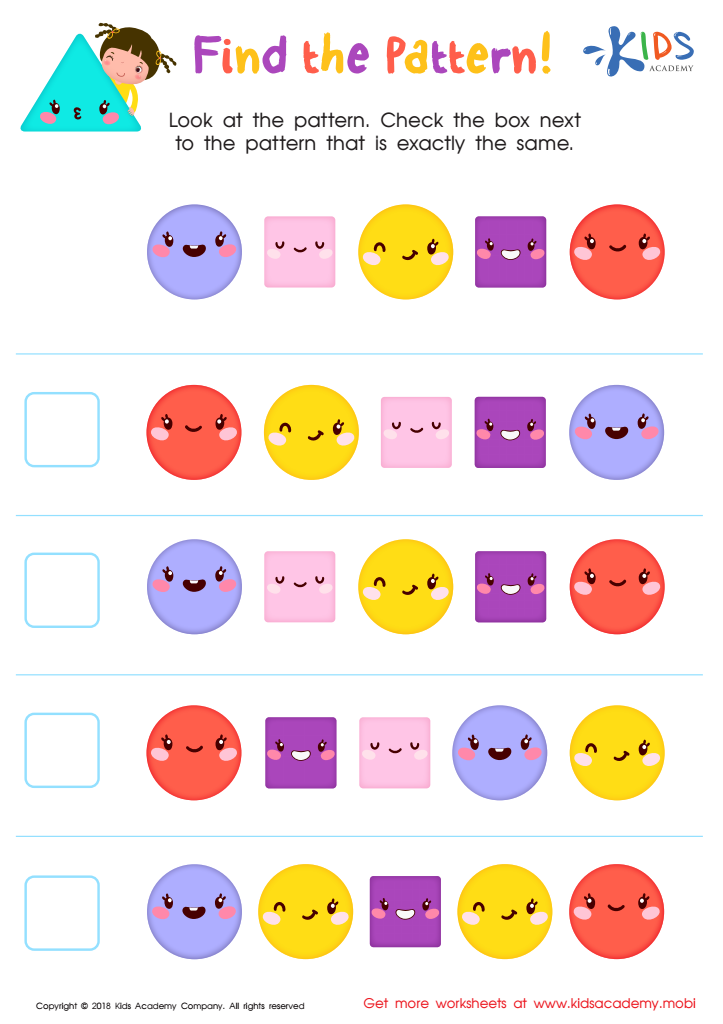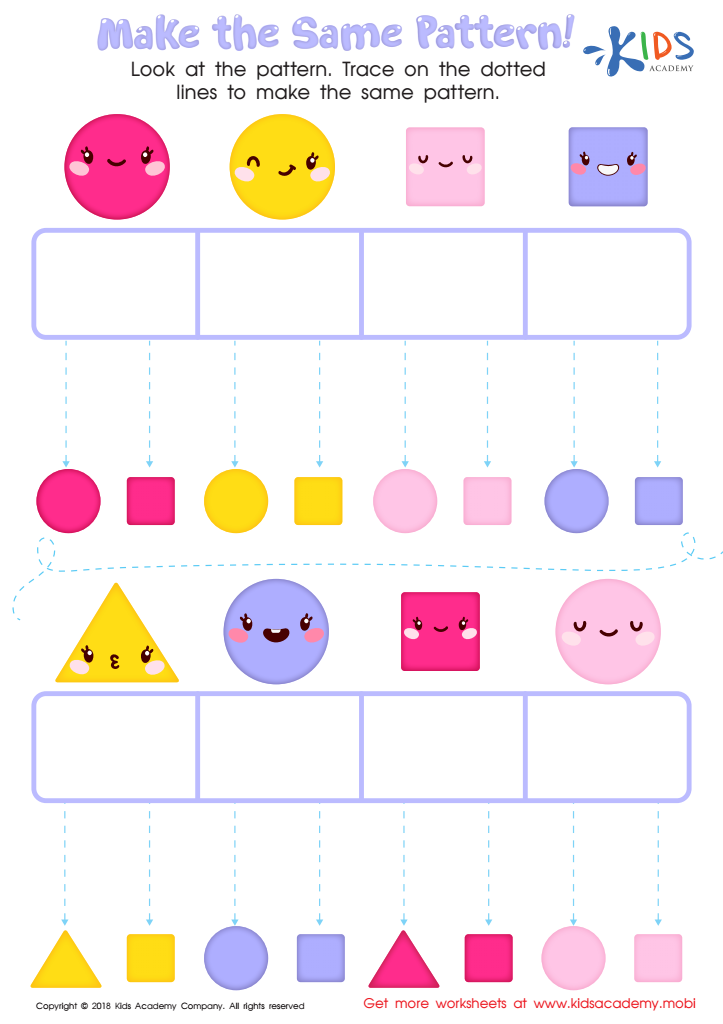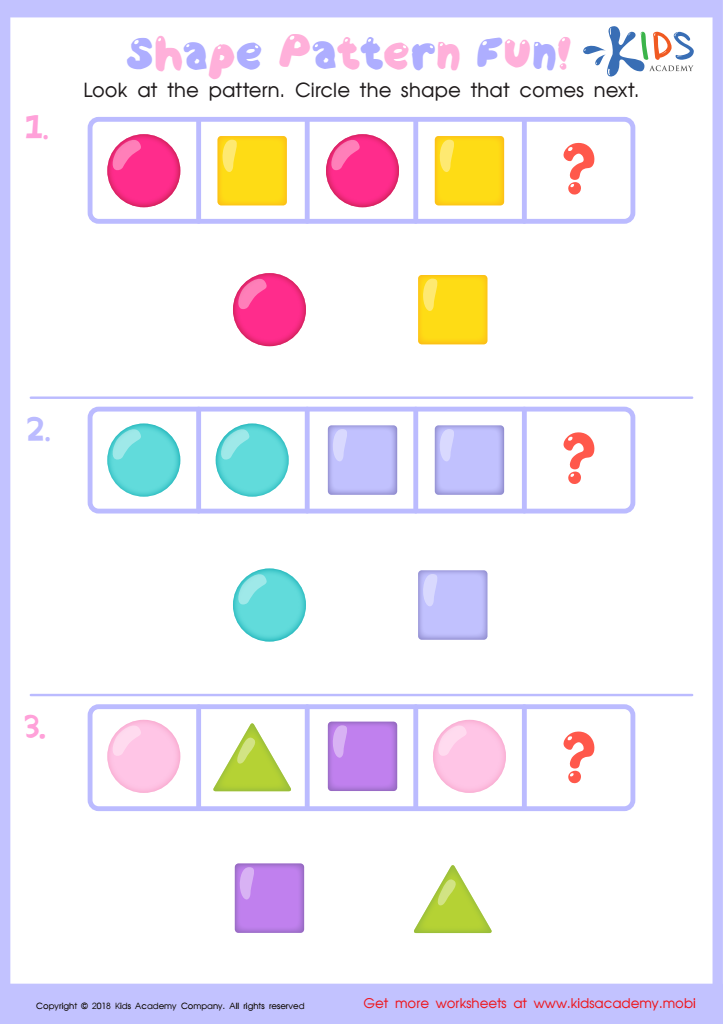Pattern recognition Normal Geometry Worksheets for Ages 5-9
3 filtered results
-
From - To
Enhance your child’s understanding of geometry with our engaging Pattern Recognition Normal Geometry Worksheets designed for ages 5-9. These printable worksheets focus on developing essential pattern recognition skills through fun and interactive exercises. Young learners will explore shapes, colors, and patterns, laying a strong foundation for future math concepts. With clear instructions and vibrant visuals, these worksheets promote critical thinking and problem-solving abilities while maintaining an enjoyable learning experience. Perfect for classroom use or at-home learning, our geometry resources are crafted to encourage hands-on practice and reinforce mathematical concepts, ensuring your child thrives in their educational journey. Start exploring today!


Find the Pattern Worksheet


Make the Same Pattern Worksheet


Shape Pattern Fun Worksheet
Pattern recognition and understanding geometry are fundamental skills that significantly benefit children aged 5-9. During these formative years, children are developing critical cognitive abilities, and engaging with patterns and geometric concepts lays the foundation for future learning across various subjects.
Firstly, pattern recognition enhances critical thinking and problem-solving skills. By identifying and predicting patterns in shapes, colors, and numbers, children learn to make connections and draw conclusions, essential skills in mathematics and science.
Secondly, geometry introduces basic spatial awareness and reasoning. Children learn about shapes, their properties, and how to manipulate them. Understanding geometry aids in developing strong visualization skills, crucial not only in math but across disciplines like art, architecture, and even daily activities like navigation.
Additionally, engaging with patterns and geometry fosters creativity and imagination. Children explore various arrangements and transformations of shapes, which can inspire innovative thinking.
Moreover, incorporating pattern recognition and geometry into early education cultivates a positive attitude towards math. When children see the beauty and logic in patterns and shapes, they build a strong mathematical foundation that encourages lifelong learning and curiosity. In essence, fostering these skills helps shape well-rounded individuals equipped for future academic and real-world challenges.
 Assign to My Students
Assign to My Students






























